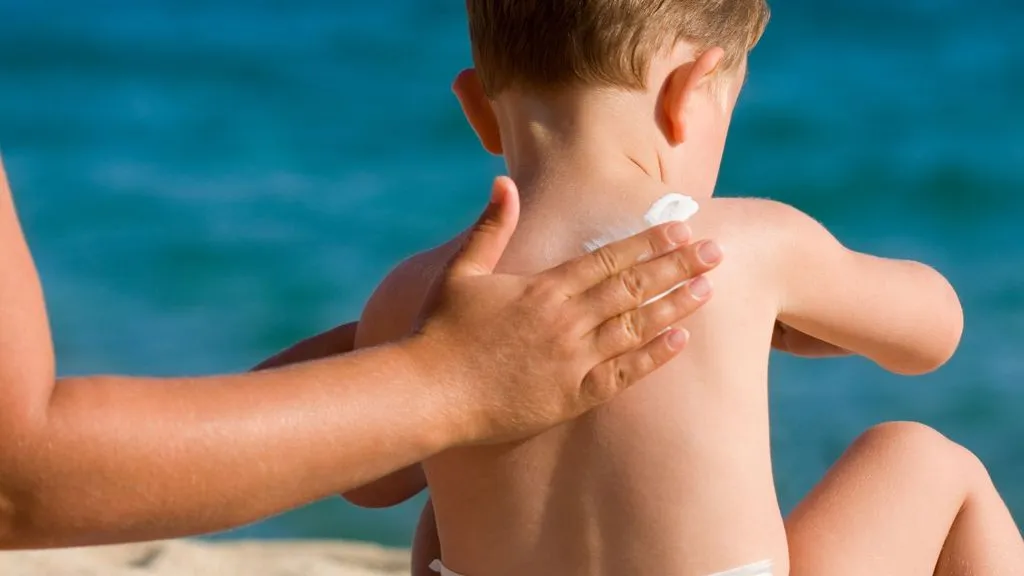Sun protection products for children: A comprehensive guide for parents
Protecting your child's sensitive skin from the sun's harmful rays is extremely important. One of the most effective ways to protect your child's skin is by using sun protection products. In this comprehensive guide, we will explore everything you need to know about sun protection products for children and provide you with tips for choosing the best sun protection factor for your child.
Read time: 4 m
Written by Preggers
Editor
Why are sun protection products important for children?
Children have more sensitive skin than adults, making them more susceptible to sun damage. Exposure to the sun's UV rays can increase the risk of serious skin problems such as sunburn, sun rash, and even skin cancer later in life. By using sun protection products, you can help protect your child from these risks and preserve their skin health in the long run.
How do sun protection products work?
Sun protection products contain special ingredients that either block or absorb the sun's harmful UV rays. The most common types of sun protection products are sunscreens and sun sticks. Sunscreens are suitable for larger areas of the body, while sun sticks are perfect for applying to the face and other small areas. By carefully applying sun protection products to your child's skin, you can create a protective barrier against the sun's harmful effects.
What is sun protection factor?
Sun Protection Factor (SPF) is an important factor to consider when choosing a sun protection product for your child. SPF indicates how long the skin can be protected from the sun's UVB rays compared to not using any sun protection. The higher the SPF number, the longer your child can stay in the sun without getting burned.
It's important to remember that the sun protection factor only refers to UVB rays and does not protect against UVA rays. To obtain broad-spectrum protection, make sure to choose a sun protection product that offers both UVA and UVB protection.
How to choose the right sun protection product for children?
When choosing a sun protection product for your child, there are a few important factors to consider:
- SPF level: Choose a sun protection product with a high SPF to provide maximum protection. An SPF of 30 or higher is recommended for children.
- Broad spectrum: Ensure that the sun protection product offers protection against both UVA and UVB rays.
- Water and sweat resistance: Select a sun protection product that is water and sweat resistant to ensure it stays on your child's skin during play and physical activity.
- Skin type: Children with fair skin may be more sensitive to the sun's rays and may require a higher SPF to adequately protect their skin.
- Ingredients: Check the ingredient list and avoid sun protection products that contain potentially harmful chemicals or fragrances. Opt for products with natural ingredients that are gentle on your child's skin.
How to use sun protection products on children
To achieve the best possible protection and ensure proper application of sun protection products, follow these guidelines:
- Early application: Apply the sun protection product 15-30 minutes before your child goes out in the sun to allow it to be absorbed and provide optimal protection.
- Generous amount: Use an adequate amount of sun protection product and spread it evenly over your child's skin. Pay extra attention to covering the areas that are most exposed, such as the face, neck, arms, and legs.
- Reapply regularly: Reapply the sun protection product every two hours or more frequently if your child is swimming or sweating heavily. Regular reapplication is key to maintaining effective protection throughout the time spent in the sun.
Additional sun protection measures for children
In addition to using sun protection products, there are further measures you can take to protect your child from the sun's harmful rays:
- Limit sun exposure: Try to avoid being outdoors when the sun's rays are strongest, typically between 10 a.m. and 4 p.m. Stay in the shade and plan indoor activities during these hours.
- Use sun-protective clothing: Dress your child in loose-fitting clothing that covers the skin well. Choose clothing with built-in sun protection or add sun protection to the laundry to provide extra protection.
- Wear a sun hat and sunglasses: Protect your child's head and eyes by using a sun hat with a wide brim and sunglasses with UV protection.
Remember to consult with a dermatologist or pharmacist if you have any specific questions or concerns about sun protection products for children. With the right knowledge and awareness, you can make your child's time in the sun both safe and enjoyable.
Written by Preggers
Editor
More from Preggers
Hundreds of related articles, podcasts & more waiting for you in the Preggers app.
Download Preggers today.

